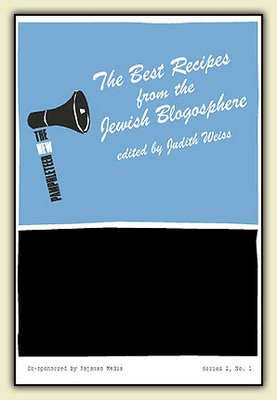As I was preparing dinner Friday afternoon, I thought of George Washington Carver.
Carver, you may recall, was a brilliant scientist with humble beginnings. Born into slavery in Missouri in 1864, he obtained a college education despite the prodigious roadblocks African-Americans faced in the Reconstruction era South. Carver found his intellectual home when, in the closing years of the nineteenth century, he received an invitation to join the faculty of Tuskeegee Normal and Industrial Institute from its founder, Booker T. Washington. Signing on as head of the Agriculture Department, he would remain at Tuskeegee for for the rest of his life, an achievement-packed career lasting 47 years.
An accomplished agronomist, Carver created over 200 recipes using peanuts. While some 105 of these were for various foodstuffs, the rest were for non-food applications such as cosmetics, coatings, plastics, fuels, and even explosives. Yes, if you wanted to make a bomb from commonly available agricultural materials, George Washington Carver could show you how to make nitroglycerin out of peanuts.
But it was when Carver turned his attention to the sweet potato that he really came into his own.
Ipomoea batatas - the humble sweet potato - grew profusely in the South, but for years had been considered a weed, its warty orange-fleshed tubers a “clownish lampoon of a proper potato,” according to Mark Twain. Carver, however, saw a cornucopia of commercial possibilities in the garish vegetable. In his nearly five decades at Tuskeegee, he developed 117,432 different products - dyestuffs, explosives, fertilizers, medications, preservatives, construction materials, hair replacements, medical prosthetics, and many, many more - all from the sweet potato. The ocarina, a musical instrument that vaguely resembles a sweet potato (and which is in fact commonly referred to as such) experienced a nationwide surge in popularity thanks to Carver’s having played it in the Tuskeegee All-Star Jug Band. In 1940, shortly after Einstein sent his famous letter to President Franklin Delano Roosevelt, Carver was the first to see the potential of the sweet potato as a source of inexpensive, clean atomic power; years later, the Navy would name its first sweet potato-powered submarine the “George Washington” in his honor. Today, a life-size statue of George Washington Carver, sculpted entirely from a single, enormous mutated sweet potato, stands at the front gate of the former Tuskeegee Normal and Industrial Institute - now Tuskeegee University.
And yet nobody was more surprised than Carver to discover that, in addition to all of these life-enhancing uses, the sweet potato was actually edible.
* * *
Yes, indeed: The sweet potato is eminently edible. And you don’t need a lot of sugar and marshmallows with which to festoon it, Thanksgiving dishes aside. Simply scrub your sweet potatoes well, rub down the exteriors with kosher salt, and bake in a 350-400°F oven until tender. A dab of butter is all you need. Or try a squeeze of lime and a scattering of chopped cilantro if you want to be exotic.
I thought of George Washington Carver - amazingly enough, the man never actually ate a sweet potato - as I was preparing a side dish, a purée of sweet potatoes and roasted garlic.
Yes, you heard that right. Sweet potatoes and roasted garlic. It’s a recipe I adapted from Chez Panisse Vegetables, a 1996 book by Alice Waters, one of the pioneers of the local/organic food movement. I’ve long had a deep respect for Chez Panisse, where She Who Must Be Obeyed and I had a memorable dinner one spring evening back in 1984. [The restaurant’s name is not, by the way, pronounced “Cheese Penis,” but, rather, should be pronounced to rhyme with “clay valise.” Don’t ask me how I found this out.]
The recipe calls for two pounds each of sweet potatoes and russet (baking) potatoes; a head of garlic, 1-2 cups of hot milk, and extra-virgin olive oil. (Having no russet potatoes on hand, I simply used sweet potatoes.) You take the head of garlic and slice the top off, drizzle it with olive oil, and wrap it in aluminum foil, then roast at 425°F for 30 minutes or so until nice and soft. The roasted cloves, aromatic and mellow, will pop right out with a little gentle pressure; reserve these. Peel and quarter the potatoes, sprinkle with a teaspoon of kosher salt, then steam them for 20 minutes or until tender. Run them (along with the reserved garlic cloves) through a food mill or ricer, then add 1-2 cups of hot milk to moisten them up. Add a splash of extra-virgin olive oil, a little freshly-ground black pepper, and you’re good to go.
This is one of those dishes that combines ingredients that you don’t expect to work well together to reveal multilayered, complex flavors. I was astonished at how good it was. Try it, and be astonished too! Ol’ George would be proud.
Carver, you may recall, was a brilliant scientist with humble beginnings. Born into slavery in Missouri in 1864, he obtained a college education despite the prodigious roadblocks African-Americans faced in the Reconstruction era South. Carver found his intellectual home when, in the closing years of the nineteenth century, he received an invitation to join the faculty of Tuskeegee Normal and Industrial Institute from its founder, Booker T. Washington. Signing on as head of the Agriculture Department, he would remain at Tuskeegee for for the rest of his life, an achievement-packed career lasting 47 years.
An accomplished agronomist, Carver created over 200 recipes using peanuts. While some 105 of these were for various foodstuffs, the rest were for non-food applications such as cosmetics, coatings, plastics, fuels, and even explosives. Yes, if you wanted to make a bomb from commonly available agricultural materials, George Washington Carver could show you how to make nitroglycerin out of peanuts.
But it was when Carver turned his attention to the sweet potato that he really came into his own.
Ipomoea batatas - the humble sweet potato - grew profusely in the South, but for years had been considered a weed, its warty orange-fleshed tubers a “clownish lampoon of a proper potato,” according to Mark Twain. Carver, however, saw a cornucopia of commercial possibilities in the garish vegetable. In his nearly five decades at Tuskeegee, he developed 117,432 different products - dyestuffs, explosives, fertilizers, medications, preservatives, construction materials, hair replacements, medical prosthetics, and many, many more - all from the sweet potato. The ocarina, a musical instrument that vaguely resembles a sweet potato (and which is in fact commonly referred to as such) experienced a nationwide surge in popularity thanks to Carver’s having played it in the Tuskeegee All-Star Jug Band. In 1940, shortly after Einstein sent his famous letter to President Franklin Delano Roosevelt, Carver was the first to see the potential of the sweet potato as a source of inexpensive, clean atomic power; years later, the Navy would name its first sweet potato-powered submarine the “George Washington” in his honor. Today, a life-size statue of George Washington Carver, sculpted entirely from a single, enormous mutated sweet potato, stands at the front gate of the former Tuskeegee Normal and Industrial Institute - now Tuskeegee University.
And yet nobody was more surprised than Carver to discover that, in addition to all of these life-enhancing uses, the sweet potato was actually edible.
Yes, indeed: The sweet potato is eminently edible. And you don’t need a lot of sugar and marshmallows with which to festoon it, Thanksgiving dishes aside. Simply scrub your sweet potatoes well, rub down the exteriors with kosher salt, and bake in a 350-400°F oven until tender. A dab of butter is all you need. Or try a squeeze of lime and a scattering of chopped cilantro if you want to be exotic.
I thought of George Washington Carver - amazingly enough, the man never actually ate a sweet potato - as I was preparing a side dish, a purée of sweet potatoes and roasted garlic.
Yes, you heard that right. Sweet potatoes and roasted garlic. It’s a recipe I adapted from Chez Panisse Vegetables, a 1996 book by Alice Waters, one of the pioneers of the local/organic food movement. I’ve long had a deep respect for Chez Panisse, where She Who Must Be Obeyed and I had a memorable dinner one spring evening back in 1984. [The restaurant’s name is not, by the way, pronounced “Cheese Penis,” but, rather, should be pronounced to rhyme with “clay valise.” Don’t ask me how I found this out.]
The recipe calls for two pounds each of sweet potatoes and russet (baking) potatoes; a head of garlic, 1-2 cups of hot milk, and extra-virgin olive oil. (Having no russet potatoes on hand, I simply used sweet potatoes.) You take the head of garlic and slice the top off, drizzle it with olive oil, and wrap it in aluminum foil, then roast at 425°F for 30 minutes or so until nice and soft. The roasted cloves, aromatic and mellow, will pop right out with a little gentle pressure; reserve these. Peel and quarter the potatoes, sprinkle with a teaspoon of kosher salt, then steam them for 20 minutes or until tender. Run them (along with the reserved garlic cloves) through a food mill or ricer, then add 1-2 cups of hot milk to moisten them up. Add a splash of extra-virgin olive oil, a little freshly-ground black pepper, and you’re good to go.
This is one of those dishes that combines ingredients that you don’t expect to work well together to reveal multilayered, complex flavors. I was astonished at how good it was. Try it, and be astonished too! Ol’ George would be proud.




















No comments:
Post a Comment